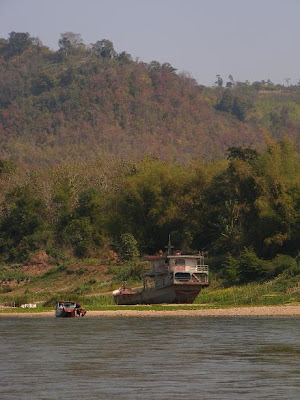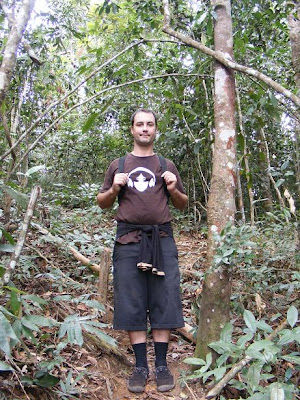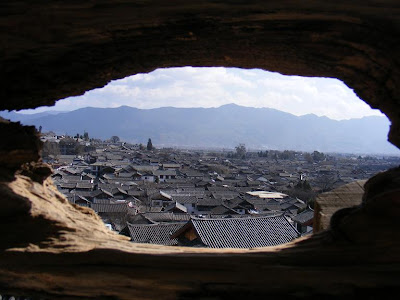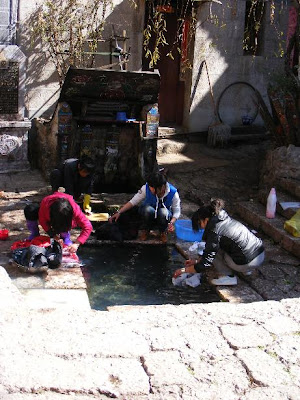Brace yourself: there are a lot of photos in this entry. And there are more to come. These are photos of the old quarter of Lijiang (plus some beverage shots just because I can), the old buildings are all really beautiful and they are set amongst cobblestoned alleyways which meander around the small, fast-running river running which runs through them.
Looking out over the Old Quarter of Lijiang. Dan took this photo while we were at a cafe on the hillside above the old town.
Night time in the Old Quarter.
The streets of the Old Quarter. It was winter and absolutely freezing while we were there. As someone who has spent the past year in the tropics, I had to wear a singlet, a shirt, a hoodie and a wind jacket. I also had to buy some socks and gloves to wear (and I had to wear two pairs of socks at a time).
Dan in the back alleyways of the Old Quarter.
Lijiang was originally inhabited by an ethnic minority group called the Naxi. The Naxi people have a pictorial alphabet, some of which is demonstrated in this photo.
Local women doing their washing in the wells. There are usually three wells in a row with varying water levels, the first is for drinking, the second is for washing fruits and vegetables and the third is for washing clothes.
Feeling thirsty?
Lijiang is absolutely packed with restaurants, bars, cafes and street stalls. Dan became addicted to bbq yak kebabs while I prefered the yak yoghurt. But it was sampling all the local tea that was a highlight for me. So many different varieties! The red tea was quite good, as was the chrysanthemum tea. The cold weather meant that I was almost constantly craving a nice, hot cup of tea; a craving which I inevitably yielded to at the earliest opportunity.
Trying yak butter tea. It was ok, not something I would have again. It tasted like milk with butter added (which, obviously, was what it was), plus there were small chunks of butter floating in it - sipping on those was a bit disconcerting.
Trying Chinese wine and a local Moon Beer.
Tea! I had a local special green tea and Dan had a plum tea. We went to this restaurant a couple of times - purely because of its extensive tea menu.





























